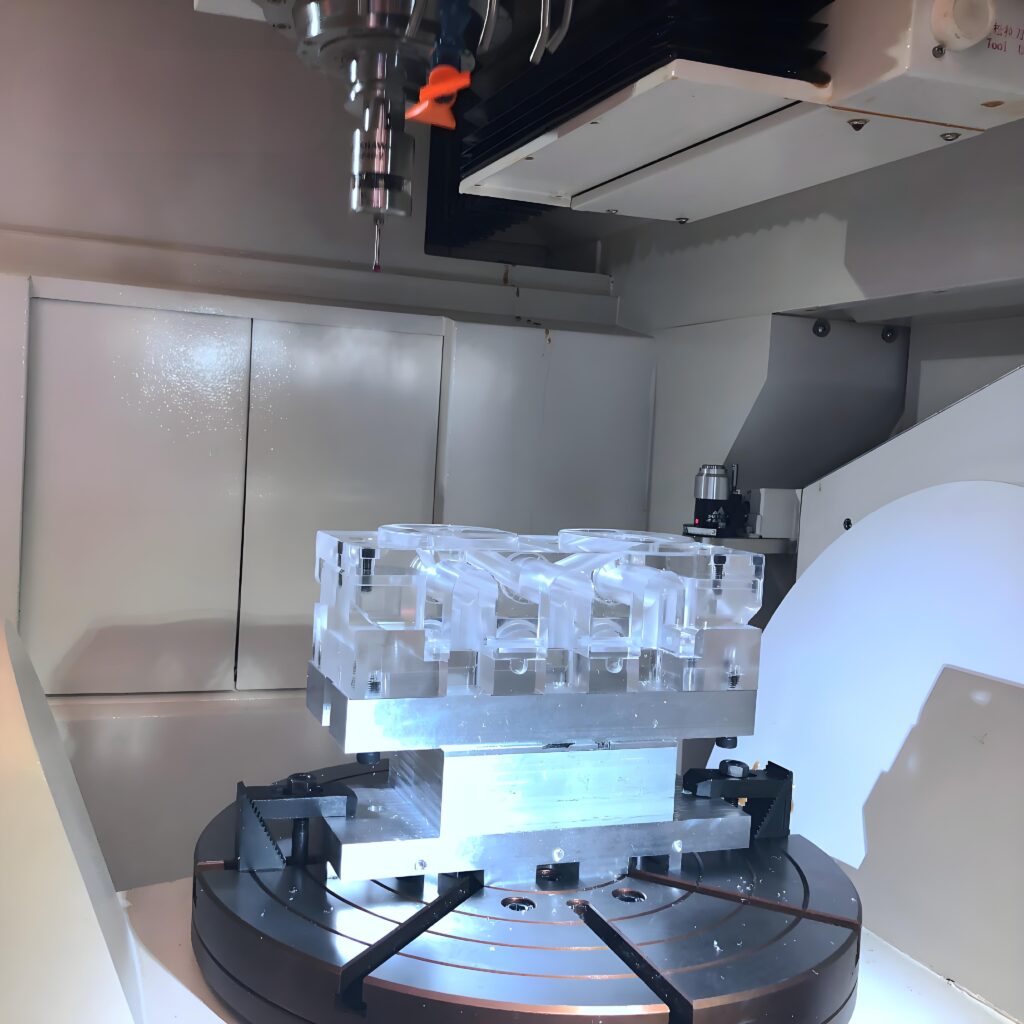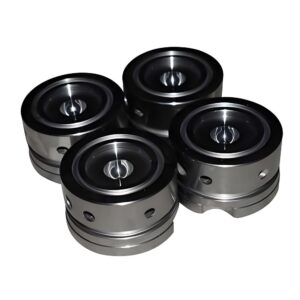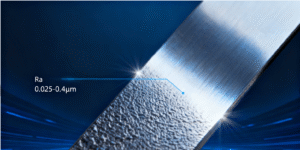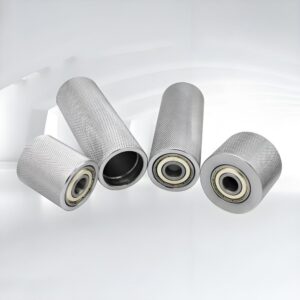CNC machining has revolutionized the manufacturing industry by offering precision, efficiency, and versatility. One of the most popular materials used in CNC machining is acrylic. Known for its clarity, durability, and ease of fabrication, acrylic is widely used in a variety of industries. This blog will explore everything you need to know about acrylic CNC machining, from its properties and types to surface treatments and industry applications.
What is Acrylic?
Acrylic, also known as polymethyl methacrylate (PMMA), is a transparent plastic material that has become a popular alternative to glass. It is lightweight, shatter-resistant, and can be easily shaped, making it ideal for various applications. Acrylic can be found in a range of products, from signs and displays to automotive parts and medical devices. Its versatility has made it a go-to material for manufacturers worldwide.
Acrylic is an excellent transparent polymer material with extremely high light transmittance, far exceeding that of ordinary glass. Even at its thickest, it allows for clear viewing and is widely used in the manufacture of optical instruments. It is not only easy to color, print, and spray, with excellent color development properties, but also possesses good thermoforming and machinability. In terms of mechanical properties: Acrylic has strong tensile and impact resistance, and its mechanical properties are essentially those of a hard and brittle plastic. In terms of thermoplastic properties: Its excellent stability enables acrylic to maintain its original shape without loss or damage during repeated heating and shaping within a certain temperature range. In terms of thermal decomposition properties: It has a wide melting processing temperature range, so it can be thermally decomposed and recycled through various methods such as steam heating, lava heating, thermal oil heating, and electric heating. This is environmentally friendly and allows for resource recycling.
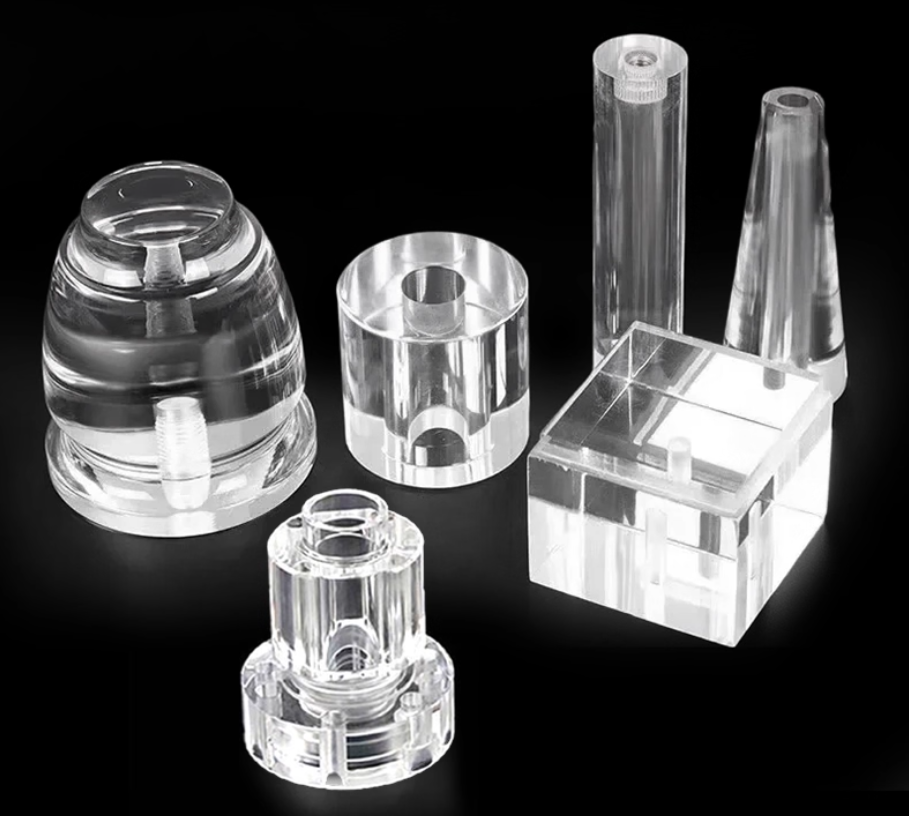
Properties of Acrylic
Acrylic is known for its excellent set of properties, which contribute to its widespread use in CNC machining. Some of the most notable properties include:
Mechanical properties
Acrylic boasts a tensile strength of 50-77 MPa and a flexural strength of 90-130 MPa, performance figures that reach or even exceed the upper limits of some engineering plastics. Its elongation at break is only 2%-3%, making it a hard and brittle plastic. It is notch-sensitive and prone to cracking under stress, but its fracture surface is not as sharp and jagged as that of polystyrene or ordinary inorganic glass.
Transparency
Acrylic offers exceptional optical clarity, often better than glass. Its transparency makes it an ideal choice for applications that require visibility, such as display cases, windows, and lenses.
Lightweight
Acrylic is much lighter than glass, which makes it easier to handle and less prone to breakage. This lightweight feature is especially important for applications that require portability.
Durability
Acrylic is highly resistant to weathering, UV rays, and impact. It is often used in outdoor applications because it maintains its strength and appearance over time, even in harsh environments.
Chemical Resistance
Acrylic resists many chemicals, including oils, fats, and acids, making it suitable for use in a wide range of industrial applications.
Ease of Fabrication
Acrylic is relatively easy to machine compared to other plastics. It can be cut, drilled, and shaped with ease, allowing for precise designs and high-quality finishes.
These properties make acrylic a preferred material in CNC machining, especially for applications requiring clear and durable components.
What Are the Types of Acrylic CNC Machining?
Acrylic CNC machining offers a variety of techniques to create intricate and precise components. Depending on the complexity of the design and the end-use requirements, different types of CNC machining processes can be employed. The most common types include:
CNC Milling
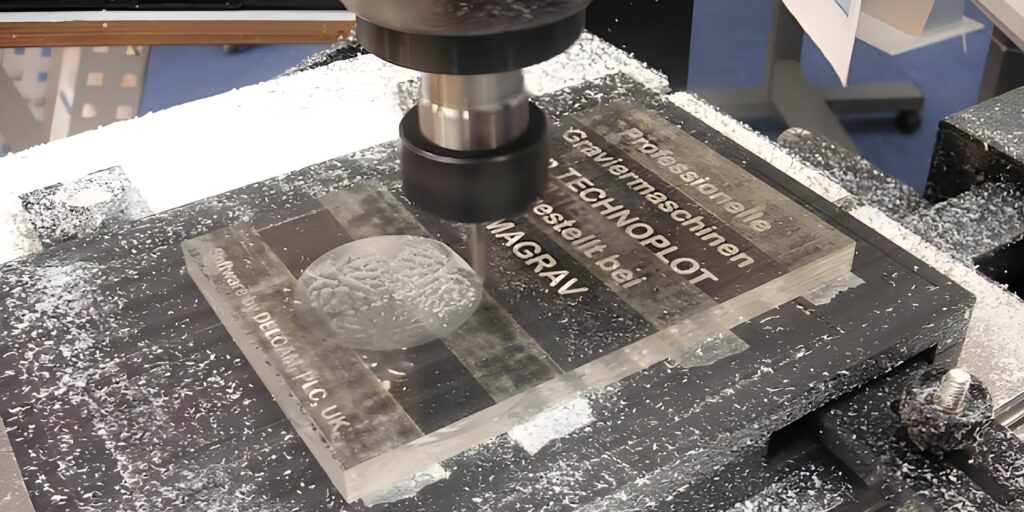
CNC milling is a process where a rotating cutter removes material from an acrylic workpiece to shape it into the desired form. This process is ideal for creating complex parts with tight tolerances and fine details.
CNC Turning
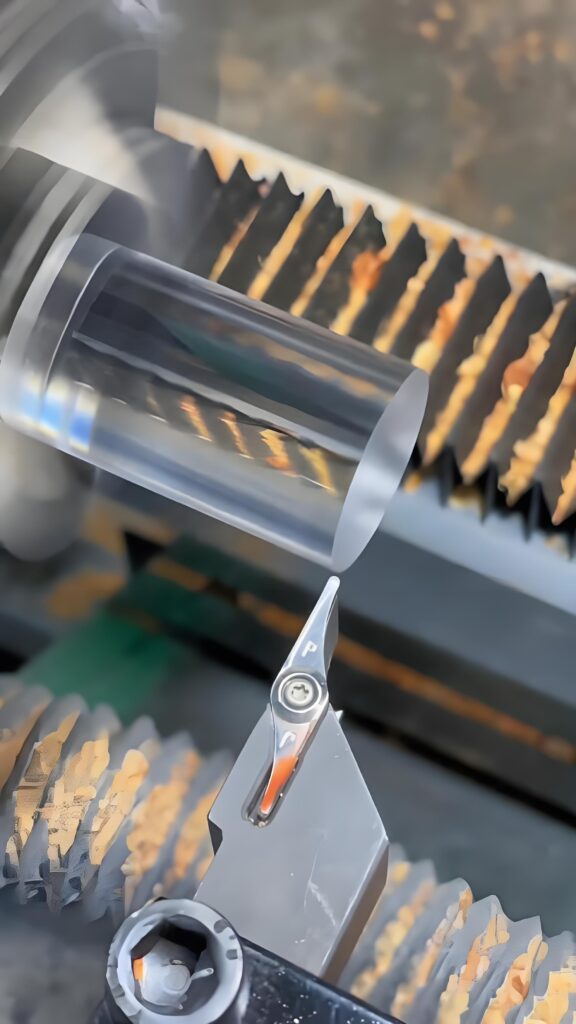
For round acrylic rods, suitable for CNC Turning, similar to LED light sticks of desk lamps.
CNC Laser Cutting
Laser cutting uses a focused laser beam to melt and vaporize acrylic material, creating clean and precise cuts. This method is commonly used for cutting intricate designs and achieving smooth edges, especially when working with thinner acrylic sheets.
CNC Drilling
CNC drilling is used to create holes in acrylic materials. With the ability to create holes of various sizes, this method is essential for components that require precise hole placement, such as panels, brackets, and connectors.
CNC Engraving
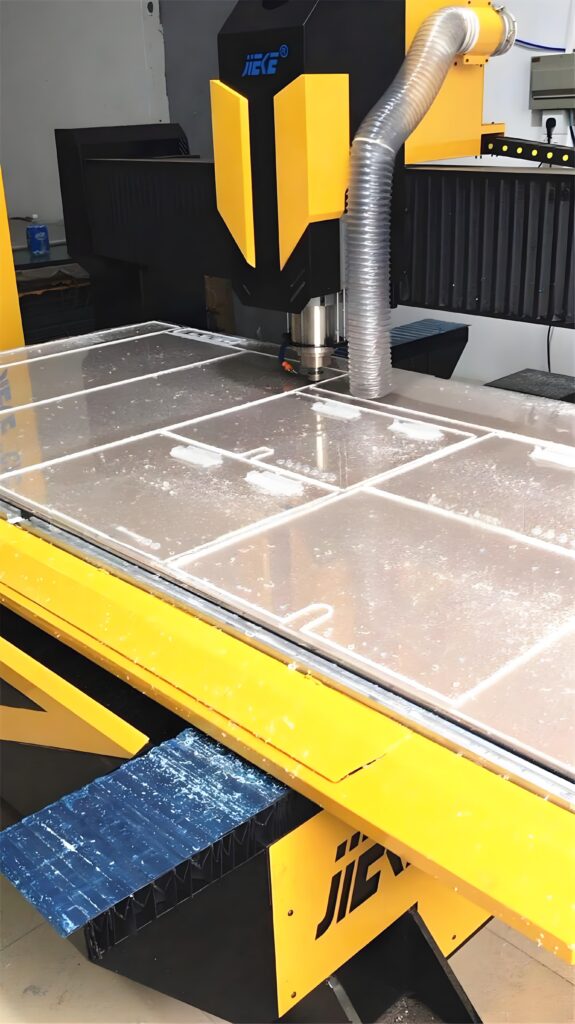
Engraving is a process where the surface of the acrylic is etched with text, logos, or designs. This method is typically used for creating custom engravings on acrylic signage or decorative pieces.
Each of these CNC machining techniques can be tailored to meet the specific needs of a project, offering flexibility and precision for a wide range of applications.
What Are the Surface Treatment Methods After Acrylic CNC Machining?
After the machining process, acrylic components may require surface treatment to improve their appearance, enhance their durability, or add special features. The most common surface treatments for acrylic CNC machined parts include:
Polishing
Polishing is often performed to improve the clarity and finish of the acrylic surface. After CNC machining, acrylic components may have rough edges or a cloudy surface. Polishing removes these imperfections and restores the material’s transparency and shine.
Flame Polishing
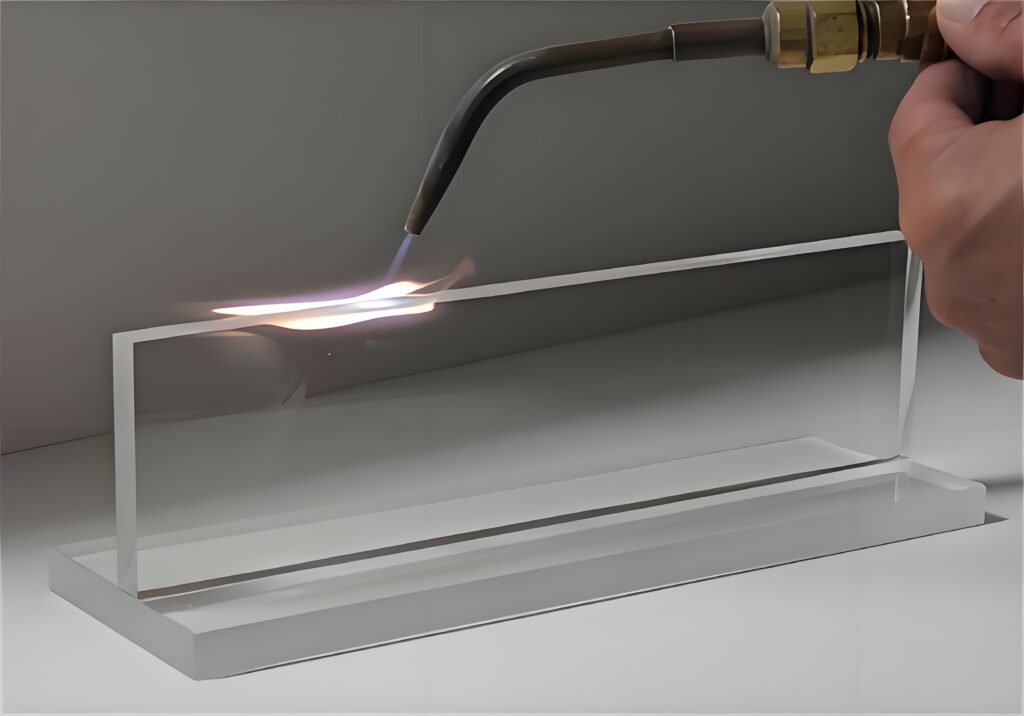
Flame polishing is a technique that involves using a high-temperature flame to melt the surface of the acrylic, smoothing out any imperfections. This method is commonly used to achieve a glossy, clear finish on acrylic edges.
Chemical Polishing
Chemical polishing involves using chemical solutions to smooth the surface of acrylic parts. This method is typically used for intricate parts or when flame polishing is not practical due to part size or shape.
Acrylic sandblasting
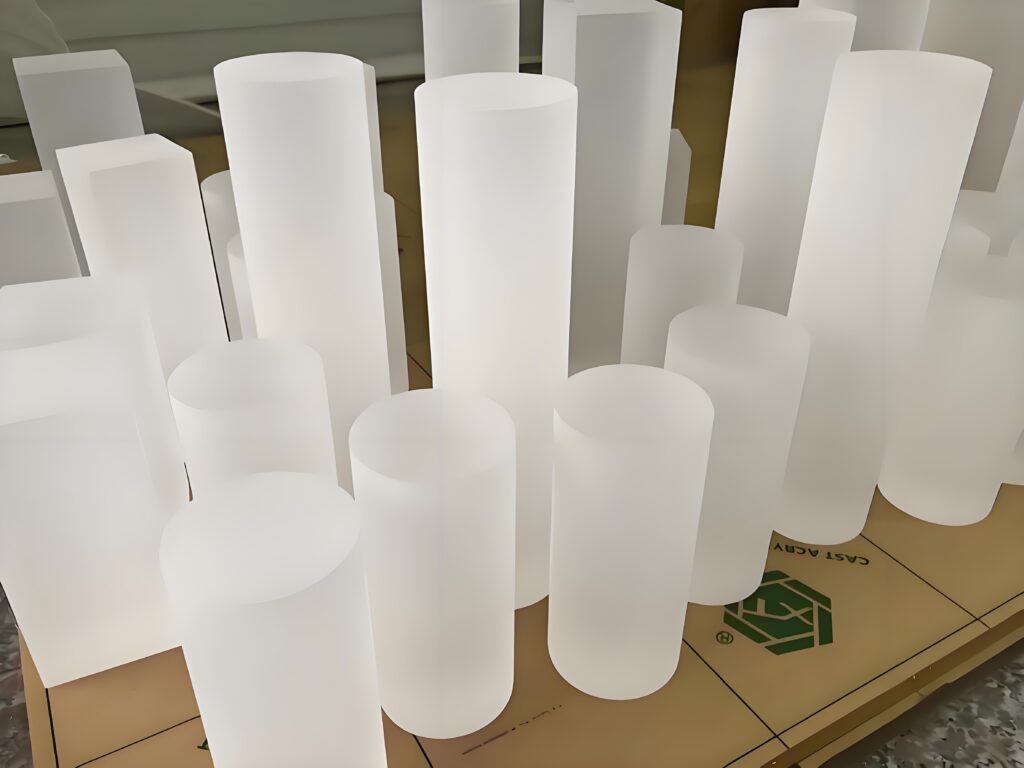
Acrylic sandblasting uses a high-pressure airflow to spray abrasives (such as glass beads or silicon carbide) onto the acrylic surface, creating a uniform frosted effect through physical impact. The core of this process is to adjust the surface roughness (Ra value 0.8-3.2μm) by controlling the abrasive particle size (commonly 80-220 mesh), air pressure (0.4-0.8MPa), and spray angle (30°-60°).
Matte Finish: Reduces surface reflectivity (gloss ≤ 10GU), suitable for lamp covers and display cabinets.
Custom Texture: Engrave logos or patterns through template masking, with an accuracy of ±0.5mm.
Anti-glare: After sandblasting, medical device panels retain 70%-85% light transmittance while reducing glare (measured data).
Coating
Acrylic can be coated with various materials to improve its resistance to scratches, UV rays, or environmental factors. UV-resistant coatings are commonly used in outdoor applications to prevent yellowing and degradation caused by exposure to sunlight.
Engraving and Etching
For aesthetic purposes, acrylic can be engraved or etched with patterns, logos, or text. These techniques can be done after machining to create decorative finishes or to add branding to components.
Advantages of Acrylic Materials
Acrylic offers numerous advantages, making it a preferred choice in CNC machining and other manufacturing processes. Some of the key benefits include:
Clarity and Transparency
Acrylic’s high level of transparency allows for excellent light transmission, making it a popular choice for display cases, lighting covers, and protective panels. Its clarity is also why it’s often used as a glass substitute.
Impact Resistance
Unlike glass, acrylic is highly impact-resistant, making it safer and more durable in high-risk environments. It is commonly used in applications such as safety shields, eyewear, and protective barriers.
Customizability
Acrylic can be easily fabricated into complex shapes and sizes, allowing for highly customized designs. This flexibility is one of the reasons acrylic is used in a wide range of industries, from architecture to electronics.
Weather Resistance
Acrylic is resistant to harsh weather conditions, including rain, snow, and UV radiation. This makes it an ideal choice for outdoor signage, windows, and other applications exposed to the elements.
Cost-Effectiveness
While acrylic is more expensive than some other plastics, its durability, versatility, and ease of fabrication make it a cost-effective material in the long run.
What Industries Are Acrylic Materials Used In?
Acrylic’s versatility and excellent properties make it suitable for use in a wide range of industries. Some of the key industries that benefit from acrylic CNC machining include:
Signage and Advertising
Acrylic is commonly used for creating illuminated signs, displays, and advertising materials. Its clarity and ability to be easily customized make it a popular choice for signage applications.
Automotive
Acrylic is used in the automotive industry for making light covers, windows, and interior panels. Its strength, lightweight nature, and clarity make it a great option for these applications.
Medical
In the medical field, acrylic is used for creating components such as medical devices, protective barriers, and display cases for medical equipment. Its clarity and ease of sterilization make it ideal for these sensitive applications.
Retail
Acrylic is used extensively in the retail industry for creating display cases, shelves, and countertops. Its durability and ability to showcase products clearly make it a favorite for retail displays.
Architecture
Acrylic is used in architectural applications such as windows, skylights, and partitions. Its transparency, combined with its weather resistance, makes it a viable alternative to glass in many architectural designs.
Electronics
Acrylic is used in the electronics industry for components such as screens, housings, and enclosures. Its clarity and ease of shaping make it a preferred choice for many electronic products.
How to Ensure the Appearance and Precision of Acrylic Materials in CNC Machining?
To achieve the best results when CNC machining acrylic, it is essential to ensure both the appearance and precision of the final product. Here are a few tips to ensure optimal results:
Choose the Right CNC Machining Method
Depending on the complexity of the design and the finish required, it is crucial to choose the right CNC machining method. For instance, laser cutting is ideal for intricate designs, while milling and routing are better suited for larger parts.
Proper Tool Selection
Using the right tools, such as high-speed steel (HSS) or carbide tools, is essential for achieving clean cuts and maintaining the material’s integrity. The tool choice will impact both the appearance and precision of the machined acrylic.
Maintain Proper Speed and Feed Rates
Acrylic can be sensitive to heat and pressure, so it is crucial to set the correct speed and feed rates during the CNC machining process. Too high a speed can cause melting or burning, while too slow a feed rate can lead to rough edges.
Post-Processing for Finish
After machining, acrylic components often require post-processing such as polishing, flame polishing, or chemical polishing to ensure a smooth and clear finish.
Conclusion: Precision and Quality with Precionn
At Precionn, we specialize in CNC machining of acrylic and other materials, offering precision, efficiency, and custom solutions for various industries worldwide. Our team is committed to delivering high-quality acrylic parts that meet your exact specifications, whether you need a simple component or a complex design. With advanced machining techniques and a focus on detail, we ensure that your acrylic products are both durable and aesthetically pleasing.

